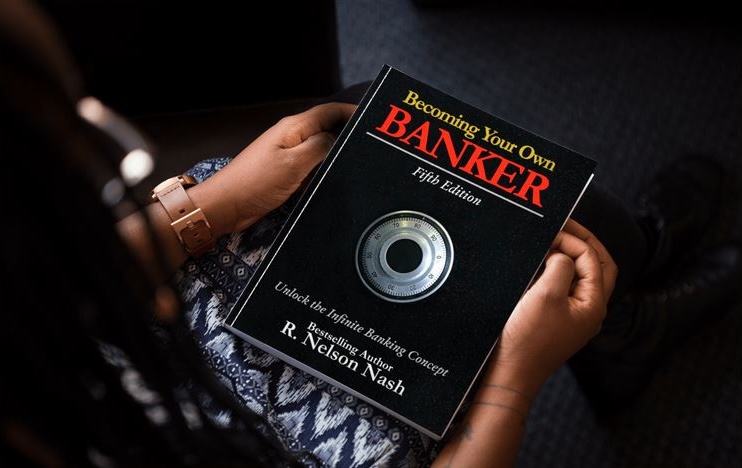Cash surrender value is the exact amount of money you will get if you decide to cancel a permanent life insurance policy before it matures or before you pass away. Cash surrender value is an asset you own. On a permanent life insurance contract, there are a number of ways to describe cash surrender value, and each of these has a slightly different meaning. They are all connected, and in this blog, we will explain the many ways cash value is described.

What is cash value?
Cash Value is the cash asset component of a Permanent Life Insurance Contract. If you are filling in your assets and liabilities on a balance sheet to determine your net worth, you would want to ensure you understand the different forms of Cash Value and what to place under your assets.
Total Cash Value is the term used to describe all types of cash value added together to give you the total gross cash value amount. With Par Whole Life, total cash value would take any guaranteed cash value from the base insurance contract and add it to any paid-up cash values that have been created, as well as any dividend cash values. When put together, they form what is known as the total cash value.
With all of these labels for cash value it often creates confusion for the general public. If there is one term used for cash values that is the most misunderstood, it would be cash surrender value. Cash surrender value refers to the total net amount of money a policy owner would receive on any given day if they were to surrender the policy contract. In essence, that means terminating or ending the policy and giving up any life insurance death benefit that comes with it.
How Cash Surrender Value Works in Life Insurance
So, how exactly does cash surrender value in a life insurance policy work? At its core, your premium payments go towards “paying” for your policy. Eventually, once you’ve paid your fees, your premiums go towards your policy’s cash value. These are the funds you can borrow from when you become your own banker through the Infinite Banking Concept. Your cash surrender value will be this amount, plus any dividends earned, minus any early termination fees that may apply.
Take control of your financial future.
Schedule a consultation with Ascendant Financial and ensure your financial choices align with your long-term goals — before it’s too late.
Accumulation over time (Example)
For example, if you want to earn $30K on a $100K whole life insurance policy in 10 years, you need:
- To be relatively young and healthy.
- Pay annual premiums of approximately $2-3K per year.
- Have an insurer with a strong dividend track record.
- Dividends earned are reinvested into your policy.
In your first year, you may only accumulate a $500 cash value due to higher upfront costs, but in subsequent years, your cash value grows faster. After year five, you could have a cash value of $9K, and $30K after 10 years.
Policy Loans and Cash Surrender Value
An attractive feature of whole life insurance plans is the ability to withdraw cash value from your policy. However, this will affect your cash surrender value until it has been repaid.
Your cash surrender value is calculated as:
Cash value – Outstanding loan – Surrender fees = Surrender cash value
For example, if you have a $30,000 cash value after 10 years, but have borrowed $10,000 and accrued $2,000 interest in that loan, your surrender value would be calculated as:
$30,000 -$12,000 = $18,000 (minus surrender fees)
When Can You Access Cash Surrender Value?
If you need to access your cash surrender value and cancel your policy, getting your funds is a 4-step process:
- Contact your insurance advisor for details of your policy, amounts, and fees.
- Review your details and decide if you wish to proceed.
- Complete the formal paperwork to surrender the policy.
- Receive your funds (minus any loans and fees).
This process can be helpful if you have emergency cash needs, need to supplement your retirement income, need to repay other debt, want to make a sizable investment, or can’t afford premiums anymore.
How is Cash Surrender Calculated?
Cash surrender value is often confusing, as it is hard to calculate. In general, cash surrender value is the total cash value we described above minus any outstanding policy loans, minus any surrender charges (which typically only apply to universal life), plus any premiums left in reserve.
When it comes to whole life, the cash surrender value is calculated by taking the total cash value plus any premiums on reserve waiting to be applied to the policy for the current pay period. Then, you would subtract any outstanding debt on the policy in the form of a policy loan. This number would already include any outstanding interest accumulated on that loan that must be returned to the participating account for the benefit of all the other participating owners.
When premiums are paid either monthly or annually, some of those funds are applied by the insurance company on a per diem basis, and they slowly get dripped into the policy. It’s almost as if the excess premium is in a side account and is slowly being applied to the policy. This premium amount still making its way into the contract can confuse many policy owners.
Here’s an example for a healthy, young individual paying $2,500 annually into their $100,000 plan:
| Cumulative premium paid | Dividends earned | Cash Value | Death Benefit | |
| Year 1 | $2,500 | $0 | $300 | $100,200 |
| Year 5 | $12,500 | $700 | $6,500 | $103,000 |
| Year 10 | $25,000 | $1,200 | $30,000 | $110,500 |
Factors Influencing Cash Surrender Value
Your surrender value is influenced by several factors and variables:
- Premium payments: Higher premiums pay off fees sooner, helping you increase your cash value faster.
- Interest rates: Variable interest rate plans can affect your earnings and dividends.
- Dividends: While they are not guaranteed, they typically earn 5-6% annually.
- Outstanding policy loans: Your cash value will decrease if you’ve borrowed cash against your policy.
Policy-Specific Calculation
You can request a detailed account statement from your insurance provider anytime. Here are key sections to look for if you’re considering a loan or surrender of your policy:
- Policy summary: This should specifically summarize your cash surrender value
- Cash value breakdown: This shows exactly where your money came from and went in your policy.
- Loan details: If you have borrowed money from your loan, your summary will be found here.
- Death benefits summary: Include your face amount, total death benefit value to date, and net death benefit minus any loans.
Your summary may also include year-by-year projections to estimate future wealth accumulation.
If you need help interpreting your statement, talk to your financial advisor.
Is Cash Surrender Value Taxable in Canada?

Yes, the cash surrender value can become taxable in Canada. It depends on both when a policyholder receives the cash value and how they receive it.
The most common instance of this is when a policy owner is receiving that cash surrender value because they have terminated, or collapsed, the policy. In this circumstance, any amount of the cash surrender value that is greater than a calculation referred to as the adjusted cost basis (ACB) automatically triggers a taxable income event. This amount, which is greater than the ACB, is added as regular income in that same calendar year that the policy owner chooses to terminate the policy.
In broad terms, that means that the policy itself has likely become very efficient to be in a position where this taxable event occurs.
Over time, cash surrender values increase and eventually exceed what the policy owner has contributed through premiums over their lifespan. The reason this becomes a taxable event is that the life insurance benefit, which is not taxable, has been collapsed. Therefore, any growth or gains on the policy, which no longer exists, must become taxable to the policy owner when they collapse the policy. Had the policy owner kept the policy in force, then the death benefit would have paid out to beneficiaries tax-free.
Example: Tax implications of early policy surrender
A client surrendered their whole life insurance policy early to access the cash surrender value. They wanted quick liquidity to address a financial shortfall; however, they were taken aback by the long-term consequences of this decision:
- Loss of coverage: Cancelling their plan stopped their life insurance coverage, which they later regretted.
- Tax implications: The cash surrender value was higher than their cost basis, so it became taxable income. This unexpectedly pushed them into a higher tax bracket and a higher bill to the CRA at tax time.
- Missed compounding value: By withdrawing their policy early, the client missed on the uninterrupted compounding growth over the policy lifetime.
The client soon realized that surrendering the policy was a short-term fix for their needs. They had to work harder later to rebuild their wealth without the growth potential of their original policy.
Too many clients don’t take the time to carefully evaluate their options before cancelling their policy. They then get blindsided when their cash surrender value exceeds the feed and adjusted cost basis. This often pushes clients, like our example above, into a higher tax bracket. There may be other financial options to gain liquidity or meet your financial goals. Review these with your tax advisor to ensure you understand your options.
Taxability Exceptions in Canada
Your cash surrender value will be taxable in Canada. This is triggered upon surrender of your policy. The amount you’ll be taxed is calculated as:
Cash Surrender Value Adjusted Cost Basis (cost of insurance charged, dividends to reduce premiums, and previous withdrawals and loans) = Taxable income
Before cancelling your policy, always review your statement and consult with a tax professional to understand how your cash value will be taxed, or ways to legally avoid paying taxes (such as reinvesting in another tax-deferred account or donating to charity).
Is Cash Surrender Value Taxable in the USA?
Yes. It’s calculated the same way as in Canada. The taxes paid will be dependent on your marginal income tax rate.
It’s important to understand the tax implications of surrendering vs borrowing against your policy. A loan from your whole life policy is not taxable (unless your policy lapses and you have an amount owing).
Your local tax laws may differ from our generalizations. Always consult a tax professional to understand the tax implications of taking the cash surrender value of your whole life insurance policy.

Surrendering Life Insurance Policy
As noted earlier, insurance policies can be surrendered or terminated by the policy owner. It is the policy owner’s right to do so. This can be done intentionally by completing the termination form from the respective life company, or it can also happen unintentionally due to a non-payment of premium
If the minimum required premiums are not paid, the policy owner is not meeting their obligation under the policy contract, and as such, the policy could lapse.
If the guaranteed cash surrender value is insufficient to initiate an automatic premium loan to keep the policy going, it will lapse and there will no longer be coverage for the life insured person.
If there is an irrevocable beneficiary designation, this can often limit or restrict the rights of the policy owner, as the irrevocable beneficiary must sign off on any changes.
It is important to understand the ramifications of surrendering your policy:
- The life insured no longer has coverage, which means the beneficiary will not receive any tax-free benefit.
- The life insured individual may have developed health conditions, or have some other reason, they might no longer be insurable.
- In the case of cash value policies, there will be no more cash value accumulation and no more access to cash values because any outstanding cash values will be paid directly to the policy owner.
- Any dividends in the policy are forfeited, and any future dividends would never have the chance to exist on that contract.
Therefore, if considering the cancellation of a policy, it is critical to make sure new coverage is approved and a policy contract is physically received and signed off by the owner.
Before canceling any existing insurance contracts, an owner should consider options of term conversion or any other methods of keeping a policy in force. This could include:
- Reducing the original face value of the contract death benefit.
- Reducing any additional rider premiums that make up the total premium.
- Considering an option referred to as reduced paid-up insurance.
The good news is that policy owners often have many options available for them that should be considered before doing the “nuclear” option of blowing up a policy by surrendering it.
Watch our free webinar to learn more about surrendering your life insurance.
Ready to take control of your financial future?
Speak with an Ascendant Financial Advisor today and start building a strategy that protects your legacy.
Three steps to decide whether to surrender your life insurance policy for the cash surrender value
Surrendering a life insurance policy is a significant decision. We encourage all clients to understand and weigh the long-term consequences carefully with their financial advisor and a tax consultant, including:
- Understand the ramifications: Surrendering a policy will cancel any future death benefits, potentially leaving your family or business without financial protection. You also stop cash value growth and forfeit future dividends tied to the policy.
- Evaluate tax implications: Your cash surrender value may be a taxable income, resulting in an unexpected tax bill, especially if it pushes you into a higher tax bracket.
- Explore alternatives: There may be other options to get the cash you need without cancelling your policy. These may include policy loans, reduced paid-up insurance, or even reducing the face value of the policy. These strategies can provide liquidity while preserving the policy’s benefits.
Is Cash Surrender Value an Asset?
Yes, Cash Surrender Value is an asset. In the corporate world, the cash surrender value is often one of the best-performing assets. It is typically associated or referenced as a key alternative to a fixed-income portfolio and can have substantial tax savings to the corporate owner. If a key employee or business owner were to pass away early, the death benefit of the plan can help the business get an influx of cash to stay afloat during the transition. For consumers, life insurance is like a mortgage. For the first few years, you pay more for the interest and fees than the principal. As your interest is paid down, your mortgage payments go towards your premium. The same is true with your life insurance: the longer you have your policy, the more you’ll be contributing to your principal or cash value (aka your equity).
How Do You Avoid Surrender Charges?
It is important to note that Cash Surrender Value in relation to a universal life contract always takes into consideration any surrender charges that may exist. These will be higher in the first 10 years of your contract, so it’s recommended to avoid surrendering your policy early.
These surrender charges are how your insurer recovers the cost of acquiring your policy. These are charged up front. which creates an incentive for the policy owner to keep the policy in force at least past the ten-year mark. This is one of the ways that the risk of the policy in a Universal Life contract is attributed to the policy owner and shifted away from the insurance company.
The best way to avoid surrender charges is to first understand the contract surrender charges. Minimize your charges by asking your insurer when the policy is paid (usually around the ten-year mark). This timeframe will be unique to your policy.
Understanding the surrender value of your policy
A whole life insurance policy is a great tool for protecting your generational wealth, providing a death benefit for those you leave behind, and creating liquidity in your assets that you can borrow from as needed during your lifetime.
Insurers understand that your situation can change, and you may need to cancel your policy early. While this will typically end any future death benefits, you may get access to the cash surrender value of your policy. This amount will vary depending on your premiums paid, dividends earned and reinvested, and any loans you took from the policy.
While cashing out your policy early may make good financial sense in some circumstances, you should consult a financial and tax advisor to understand the tax implications of making this important decision.
Discover The Process Of Becoming Your Own Banker!
Get access to our expert financial advisors and coaches who can help you implement permanent life insurance. Register for the training to learn more about permanent life insurance benefits so that you can book a time with your own advisor.

Cash Surrender Value FAQs
What is the cash value of a $10,000 whole life insurance policy?
The cash value of your whole life insurance policy will grow over time, and likely won’t be $10k for the first few years. Your cash value will depend on variables, including how many payments you’ve made, dividends you’ve earned and reinvested in your plan, and any loans you have withdrawn from your plan.
What type of asset is cash surrender value?
Cash surrender value is considered an asset. It may be considered either a non-current asset if the value isn’t expected to be cashed within the next year, or a current asset if cash out is less than a year. On some balance sheets, it may fall under the “Other Assets” category. Talk to your financial advisor for details of your cash surrender value classification.
Popular Posts
- How to Get Started With Infinite Banking: Step-by-Step Guide
 Ready to take control of your financial future? Tired of traditional banking that seems to benefit everyone except you? Infinite Banking might be the solution… Read more: How to Get Started With Infinite Banking: Step-by-Step Guide
Ready to take control of your financial future? Tired of traditional banking that seems to benefit everyone except you? Infinite Banking might be the solution… Read more: How to Get Started With Infinite Banking: Step-by-Step Guide - Term vs Whole Life Insurance: Which One Is Right for You?
 Life insurance plays a vital role in protecting your family’s financial future, but navigating the different policy types can feel overwhelming. Two of the most… Read more: Term vs Whole Life Insurance: Which One Is Right for You?
Life insurance plays a vital role in protecting your family’s financial future, but navigating the different policy types can feel overwhelming. Two of the most… Read more: Term vs Whole Life Insurance: Which One Is Right for You?
Share This Post
About the Author:
Jayson Lowe
As a seasoned coach, author, and podcast host, Jayson’s insights are rooted in real-world experience and a proven track record of turning challenges into opportunities. He’s not just a speaker—he’s a catalyst for change, inspiring audiences with actionable strategies and the motivation to implement them. Whether you’re looking to ignite your team’s potential, elevate your business strategies, or gain unparalleled insights into entrepreneurship, Jayson Lowe delivers with passion, clarity, and an undeniable impact.
Categories & Tags






